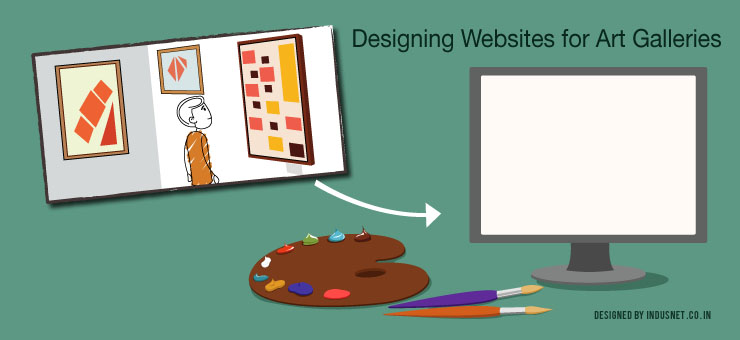
It isn’t uncommon these days to see a new art gallery spring up in every neighborhood that is trendy or fashionable. Even working class neighborhoods have seen lofts and garages being turned into art galleries. Thanks to a growing awareness about art and the way it changes lives, people have begun to invest in art.
Artists, meanwhile, have felt energized and encouraged by an enthusiastic market, leading to ever more galleries opening up. Art galleries too need websites, just like everything else. However, the way we design a website for an art gallery is significantly different from designing for other businesses.
While art galleries are businesses, they are also the pinnacle of human creativity. If you decide to design websites for clients who own art galleries or are artists themselves, bear in mind that they may not like conventional websites that you design for other clients. In fact, it just will not work.
So, what really works for art galleries? In short, the focus needs to be on displaying art that can be purchased and the website that you design needs to function as a frame. The website need not hog all the attention so much so that the art, which is up for sale, is ignored by visitors.
In this article, we list 5 tips that will help you to design great websites for art galleries and artists:
Websites for art galleries need to be easy to use. They need to load fast and images need not take a lot of time to download, even if they are of high resolution quality. Links need to appear consistently in the same place on every page, when people are browsing works of art. It is always better to have a very simple page structure when it comes to art galleries. Fewer the pages, the better.
In fact, many web designers forego the need for having separate About Us, Contact Us, Blog, Products and other pages. Instead, all work can be displayed on the homepage or one could categorize and display art in a different page. Yet, there need not be a lot of distractions from actual art. Just like an art gallery is usually stark and bare, allowing to art to stand on their own, a website needs to be able to allow works of art to stand on their own.
While it is OK to use bright colors on corporate websites, especially, if their brand image allows it, it is not really OK to use a lot of colors on websites designed for artists and art galleries. Colors can distract the viewer from actual art and negate the purpose of the gallery website as an online frame. Use mostly white but if the gallery requests, you can use black.
However, art looks best on a white background. White backgrounds help viewers to concentrate on the work of art, instead of getting distracted. Other colors might create a noise-effect on the work of art, leading to misinterpretations of the work of art itself.
This rule cannot be stated enough. All art related websites need to all be minimalist. Whether the gallery features photographs, paintings or conceptual art, the website itself needs to be very minimalist. While art thrives on creativity and adventure, its frame (in this case, website) need not be adventurous.
It should be as minimalist and non-intrusive as possible. This helps the work of art to be featured clearly, without any background noise. Minimalism is also valued by artists themselves and they will probably be happier with your services when the website is functional and minimalist.
Art, unless it is literature, usually, focuses on the visual. This means, it is important to keep less text on art-related websites and have more space for images. Image-centric websites that feature galleries and links to purchase works of art are always better than websites that publish a lot of text with small thumbnails.
People are there to view works of art and probably buy them but not read lengthy essays. You could probably have a clear and brief description of the work of art. For instance, it is necessary to mention the title, description and format of the work of art; and it is always good to leave it there.
With the advent of social networking sites like Pinterest among others, it has become common among people to share images of products that they like. Art being a product itself, when sold on online galleries, needs to be social media friendly. Thus, it is a good idea to make works of art easy to share on social media sites, especially, Pinterest. They could also be tweeted or shared on Facebook, depending on the target audience.